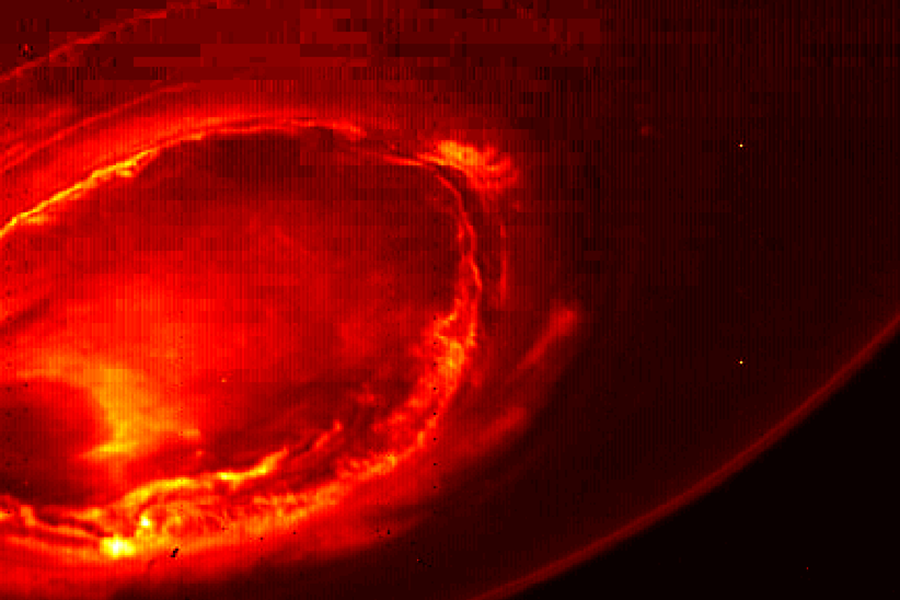Jupiter photos: 'Like nothing we have seen or imagined before'
Loading...
Highly anticipated data from Juno's first flyby of Jupiter has arrived and the data is shattering expectations.
After careening through space for five years, NASA's Juno spacecraft arrived at Jupiter on July 4 of this year. With all systems go, the orbiter completed its first of 36 orbital flybys on Aug. 27. The craft's first six-hour-long sweep from Jupiter's north pole to south pole has yielded some startling results, including storms "unlike anything previously seen on any of our solar system’s gas-giant planets," a peculiar hexagon at the north pole, the first-ever glimpse of the planet's southern aurora, and "ghostly-sounding transmissions emanating from above the planet."
"First glimpse of Jupiter's north pole, and it looks like nothing we have seen or imagined before," said Scott Bolton, principal investigator of Juno from the Southwest Research Institute in San Antonio, in a NASA press release. "It's bluer in color up there than other parts of the planet, and there are a lot of storms. There is no sign of the latitudinal bands or zone and belts that we are used to – this image is hardly recognizable as Jupiter. We're seeing signs that the clouds have shadows, possibly indicating that the clouds are at a higher altitude than other features."
Scientists are particularly intrigued by the appearance of a hexagon on the north pole. NASA's Voyager and Cassini missions have spotted a similar hexagonal cloud pattern at Saturn’s north pole, but nothing quite like it had every been spotted on any other world, Space.com reported in 2015.
Saturn's hexagon turned out to be 60-mile-wide churning storm that is hemmed in by winds below the cloud level. It will be a while yet before scientists are able to determine what is going on inside Jupiter’s hexagon.
The first-ever view of Jupiter's southern aurora comes courtesy of Jovian Infrared Auroral Mapper (JIRAM), supplied by the Italian Space Agency. JIRAM offers infrared views that reveal temperature differentials throughout the planet.
"JIRAM is getting under Jupiter's skin, giving us our first infrared close-ups of the planet," said Alberto Adriani, JIRAM co-investigator from Istituto di Astrofisica e Planetologia Spaziali, Rome, in the release. "These first infrared views of Jupiter's north and south poles are revealing warm and hot spots that have never been seen before. And while we knew that the first-ever infrared views of Jupiter's south pole could reveal the planet's southern aurora, we were amazed to see it for the first time. No other instruments, both from Earth or space, have been able to see the southern aurora. Now, with JIRAM, we see that it appears to be very bright and well-structured. The high level of detail in the images will tell us more about the aurora's morphology and dynamics."
The capture of eerie radio transmissions may be the least surprising finding, as scientists have known about them since the 1950s, but the dataset collected by the Radio/Plasma Wave Experiment (Waves) is sure to enchant astronomy hobbyists.
"Jupiter is talking to us in a way only gas-giant worlds can," said Bill Kurth, co-investigator for the Waves instrument from the University of Iowa, Iowa City. "Waves detected the signature emissions of the energetic particles that generate the massive auroras which encircle Jupiter’s north pole. These emissions are the strongest in the solar system. Now we are going to try to figure out where the electrons come from that are generating them."
With nearly three dozen more flybys to go, scientists are anticipating a great deal more of Juno's bounty in the next year as the craft sends more data to Earth.









